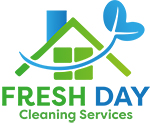Eco-friendly cleaning products are defined by their use of non-toxic, biodegradable ingredients and sustainable manufacturing processes that minimize environmental impact. Key components often include natural substances like vinegar, baking soda, and essential oils. These products significantly reduce water and air pollution compared to conventional cleaners, which contribute to hazardous waste generation. Certifications such as Green Seal and EPA Safer Choice guarantee adherence to stringent environmental standards. While initially more expensive, eco-friendly cleaners offer long-term cost savings through reduced health risks and environmental compliance fees. Their effectiveness rivals traditional cleaners, and they provide additional benefits for indoor air quality and vulnerable populations. Further exploration reveals the full scope of advantages offered by these sustainable alternatives.
Defining Eco-Friendly Cleaning Products
Eco-friendly cleaning products represent a growing segment of the household cleaning market, characterized by their reduced environmental impact and safer formulations. These green cleaners are designed to minimize harm to both the environment and human health, often featuring biodegradable ingredients and low toxicity levels. However, the term “eco-friendly” lacks a formal definition, making it essential for consumers to investigate product claims and scrutinize ingredient lists to avoid greenwashing.
Certification plays an important role in validating eco-friendly cleaning products. Labels such as Green Seal and EPA Safer Choice guarantee adherence to strict environmental standards, providing consumers with confidence in their purchases. Many of these products utilize non-hazardous natural ingredients like vinegar, baking soda, and essential oils as effective alternatives to traditional chemical cleaners. Additionally, eco-friendly cleaning products often come in sustainable packaging that is recyclable or biodegradable, contributing to waste reduction and environmental conservation. This holistic approach to product development and packaging demonstrates a commitment to reducing the overall environmental footprint of cleaning solutions, aligning with consumer demands for more sustainable household products.
Key Ingredients in Green Cleaners
The cornerstone of green cleaning products lies in their carefully selected, environmentally conscious ingredients. Eco-friendly cleaners utilize natural substances that effectively clean and disinfect without introducing harmful chemicals into the environment. These products often incorporate vinegar, a potent natural disinfectant capable of eliminating bacteria and viruses. Baking soda serves as a versatile stain remover and odor neutralizer, while essential oils like tea tree and lavender provide antimicrobial properties and pleasant fragrances without synthetic additives.
| Ingredient | Function | Environmental Benefit |
|---|---|---|
| Vinegar | Disinfectant | Non-toxic, biodegradable |
| Baking Soda | Stain remover, deodorizer | Natural, non-abrasive |
| Essential Oils | Antimicrobial, fragrance | Plant-based, no synthetic additives |
| Castile Soap | Surfactant | Biodegradable, vegetable-oil based |
Green cleaning products also frequently include castile soap, a biodegradable surfactant derived from vegetable oils, which effectively cleans surfaces without introducing toxic substances. Citric acid, extracted from citrus fruits, acts as a natural preservative and cleaning agent, enhancing the efficacy of other eco-friendly ingredients by breaking down mineral deposits. These key components collectively form the foundation of effective, environmentally responsible cleaning solutions that prioritize both cleanliness and ecological sustainability.
Environmental Impact of Cleaning Chemicals
Traditional cleaning chemicals significantly contribute to environmental degradation through water and air pollution. The production and disposal of conventional cleaners generate nearly 31,000 tons of hazardous waste annually, posing risks to aquatic ecosystems and water quality. Additionally, these chemicals release volatile organic compounds (VOCs) into indoor environments, compromising air quality and potentially leading to respiratory issues and other health problems.
Water Pollution Concerns
Conventional cleaning products pose significant threats to water quality and aquatic ecosystems. These products contribute approximately 30,948 tons of hazardous waste annually, leading to substantial water pollution. The chemical composition of traditional cleaning agents, particularly phosphates and surfactants, can trigger algal blooms, depleting oxygen levels in water bodies and endangering aquatic life.
The environmental impact of cleaning chemicals extends beyond immediate effects:
- Persistent chemicals contaminate water sources long-term
- Harmful substances bypass sewage treatment processes
- Improper disposal leads to groundwater contamination
- Aquatic ecosystems suffer from reduced biodiversity
Studies indicate that household cleaning products introduce harmful chemicals into wastewater, which may not be fully eliminated during sewage treatment. This results in the potential contamination of drinking water sources, posing risks to human health. In addition, the improper disposal of cleaning chemicals can lead to leaching into groundwater, jeopardizing both local ecosystems and human populations relying on these water sources.
To mitigate water pollution concerns, the adoption of eco-friendly products is essential. These alternatives minimize the introduction of harmful substances into water systems, reducing the overall environmental impact and preserving aquatic habitats.
Air Quality Effects
While often overlooked, the impact of cleaning chemicals on air quality extends far beyond their intended surfaces. Conventional cleaning products release volatile organic compounds (VOCs), significantly contributing to indoor air pollution. Studies reveal that indoor air can be up to five times more polluted than outdoor air, with cleaning chemicals being a major source of contamination.
The air quality effects of these products pose substantial health risks to building occupants, including respiratory issues and allergic reactions. Annually, hazardous cleaning products generate nearly 30,948 tons of hazardous waste, further compromising air quality and ecosystem health when improperly disposed of.
| Parameter | Conventional Products | Green Products | Impact |
|---|---|---|---|
| VOC Content | High | Low/None | Improved air quality |
| Health Risks | Significant | Minimal | Reduced respiratory issues |
| Waste Generation | 30,948 tons/year | Significantly less | Decreased environmental harm |
Transitioning to green cleaning products, characterized by low or no VOC content, can markedly improve indoor air quality. This shift not only reduces the risk of health problems associated with chemical exposure but also leads to a decrease in harmful emissions, fostering a healthier environment for both building occupants and the broader community.
Certifications and Eco-Labels
Steering through the world of eco-friendly cleaning products can be challenging, but certifications and eco-labels provide valuable guidance for conscientious consumers. These third-party certifications offer transparency and credibility, helping consumers avoid greenwashing and make informed decisions about green products. Certifications such as Green Seal and EPA Safer Choice indicate that cleaning products meet stringent environmental and safety standards, guaranteeing they are safer for both human health and the environment.
Other notable certifications include:
- USDA Organic: Guarantees organic ingredients and production without synthetic fertilizers or pesticides
- Cradle to Cradle: Assesses products based on their entire lifecycle, including material health and recyclability
- Leaping Bunny: Guarantees products are cruelty-free and not tested on animals
- EPA Safer Choice: Identifies products that meet strict safety criteria for human health and the environment
These certifications evaluate various aspects of product sustainability, from ingredient sourcing to manufacturing processes and end-of-life considerations. By looking for these eco-labels, consumers can confidently choose cleaning products that align with their environmental and ethical values while supporting companies committed to sustainable practices. The increasing prevalence of these certifications is driving innovation in the green products industry and promoting greater transparency in product claims.
Packaging and Waste Reduction
Addressing the vital issue of packaging and waste reduction, eco-friendly cleaning product manufacturers have implemented innovative strategies to minimize environmental impact. These companies utilize recyclable, compostable, or biodegradable materials for their packaging, aligning with the principles of eco-friendly design. However, the effectiveness of these efforts is challenged by the current recycling landscape, as evidenced by the FTC Green Guides’ 60% recyclability threshold and the mere 9% of plastic waste recycled in 2018.
To combat this issue, manufacturers are adopting waste management hierarchy principles, emphasizing reduction and reuse. This approach encourages consumers to purchase bulk quantities and opt for concentrated or refillable cleaning products, effectively minimizing single-use container waste. Additionally, transparent packaging practices are essential to prevent misleading information about non-eco-friendly materials.
The implementation of eco-friendly packaging extends beyond waste reduction, contributing to the development of a circular economy. By promoting the reuse and recycling of materials, these practices support broader sustainability efforts. As consumers become increasingly aware of packaging’s environmental impact, manufacturers must continue to innovate and improve their packaging strategies to meet evolving eco-friendly standards and consumer expectations.
Health Benefits of Green Cleaning
Green cleaning products offer substantial health benefits through reduced chemical exposure, improved indoor air quality, and improved safety for vulnerable populations. Studies demonstrate that eco-friendly cleaners significantly decrease the incidence of respiratory issues and allergic reactions among occupants and cleaning staff, while simultaneously minimizing short-term health problems like eye irritation and nausea associated with traditional chemical cleaners. The utilization of non-toxic, biodegradable ingredients in green cleaners contributes to healthier indoor environments, particularly benefiting children and the elderly, and potentially reducing healthcare costs related to chemical exposure by billions of dollars annually.
Reduced Chemical Exposure
The health benefits associated with reduced chemical exposure are a significant advantage of eco-friendly cleaning products. These green alternatives minimize the presence of volatile organic compounds (VOCs) in indoor environments, thereby boosting air quality and reducing the risk of respiratory issues. Non-toxic ingredients used in eco-friendly cleaners decrease the likelihood of skin irritations and allergic reactions, particularly benefiting sensitive individuals such as children and those with compromised immune systems.
Studies have demonstrated that traditional cleaning products can contribute to various health problems, including headaches and nausea. In contrast, green cleaning solutions mitigate these risks by utilizing safer, biodegradable ingredients. The implementation of eco-friendly cleaning practices also promotes a safer working environment for janitorial staff, reducing chemical-related injuries.
Key benefits of reduced chemical exposure include:
- Improved indoor air quality
- Decreased risk of respiratory issues
- Lower incidence of skin irritations and allergic reactions
- Enhanced overall well-being and productivity among building occupants
Improved Indoor Air Quality
While reduced chemical exposure offers numerous health benefits, elevated indoor air quality stands out as a paramount advantage of eco-friendly cleaning products. These green alternatives significantly diminish indoor air pollution by minimizing the release of volatile organic compounds (VOCs), which are prevalent in traditional cleaners and can lead to respiratory issues and other health problems.
Research indicates that utilizing eco-friendly cleaning products can boost indoor air quality by up to 50%, resulting in substantial improvements in occupants’ overall health and well-being. The non-toxic ingredients found in these cleaners decrease the likelihood of acute health issues such as eye irritation and skin reactions, which are commonly associated with conventional chemical-based cleaning agents.
Long-term exposure to hazardous cleaning products has been linked to severe health conditions, including asthma and organ failure. By switching to safer alternatives, individuals can create healthier indoor environments and reduce the risk of developing these environmentally-related health issues. The adoption of eco-friendly cleaning products aligns with public health initiatives aimed at mitigating the incidence of such conditions, ultimately contributing to improved indoor air quality and promoting better respiratory health for building occupants.
Safer for Vulnerable Populations
Vulnerability becomes a critical consideration when evaluating the safety of cleaning products, particularly for populations with heightened sensitivity to environmental toxins. Green cleaning products offer significant advantages for these at-risk groups, including children, the elderly, and individuals with compromised immune systems. By reducing exposure to toxic substances, eco-friendly cleaners minimize health risks associated with conventional cleaning agents.
The health benefits of green cleaning products for vulnerable populations include:
- Decreased risk of respiratory issues and allergic reactions
- Improved indoor air quality, benefiting those with asthma
- Reduced likelihood of chemical burns or skin irritations
- Lower long-term health risks from chemical exposure
Studies demonstrate that non-toxic ingredients in green cleaners contribute to improved overall health outcomes for sensitive groups. The reduction of harmful chemicals in these products creates safer living environments, supporting the well-being of vulnerable individuals. Implementation of eco-friendly cleaning practices not only protects immediate health but also promotes long-term wellness by minimizing exposure to potentially harmful substances. This approach to cleaning aligns with the broader goal of creating healthier living spaces for all, with particular emphasis on safeguarding those most susceptible to environmental toxins.
Effectiveness Vs. Traditional Cleaners
When comparing eco-friendly cleaning products to traditional cleaners, effectiveness emerges as an essential factor in consumer decision-making. Studies demonstrate that eco-friendly alternatives can achieve comparable cleaning effectiveness to conventional household chemicals, often with reduced health risks associated with chemical exposure. These environmentally conscious products utilize non-toxic ingredients like vinegar and baking soda to combat dirt and grime effectively.
Research indicates that while traditional cleaners may exhibit immediate results, eco-friendly products can provide longer-lasting cleanliness due to their biodegradable and low-residue formulations. In addition, eco-friendly products have been developed to target specific cleaning tasks, proving their efficacy in areas such as disinfecting, stain removal, and odor neutralization, mirroring the capabilities of traditional cleaners.
The long-term benefits of eco-friendly products, including improved indoor air quality and reduced environmental impact, often outweigh the immediate effectiveness of traditional chemical cleaners. This shift towards sustainable cleaning solutions demonstrates that effectiveness need not be sacrificed for environmental considerations, as eco-friendly products continue to evolve and match or surpass the performance of their conventional counterparts.
Cost Considerations for Eco-Products
When evaluating eco-friendly cleaning products, it’s essential to analyze both initial costs and long-term financial implications. While upfront expenses for these products are typically higher, factors such as reduced healthcare costs, lower environmental compliance fees, and the concentrated nature of many eco-solutions can lead to overall savings. In addition, the increasing market demand for green products suggests potential price reductions in the future, and their use can improve property value, offering benefits beyond immediate cost considerations.
Initial Vs. Long-Term Expenses
Cost analysis of eco-friendly cleaning products reveals a nuanced financial landscape. While initial expenses may be higher, long-term savings often outweigh the upfront costs. The use of eco-friendly products can lead to significant reductions in healthcare expenditures, with potential savings of up to $2.3 billion annually in the U.S. healthcare system due to decreased chemical exposure. Additionally, businesses adopting these products may experience lower environmental compliance costs, avoiding penalties associated with hazardous waste regulations.
The long-term economic benefits of eco-friendly cleaning products include:
- Concentrated formulas requiring less product per use
- Improved property value and marketability
- Improved operational efficiency through staff training
- Reduced frequency of purchases due to effective cleaning processes
Furthermore, the adoption of biodegradable ingredients can result in fewer regulatory hurdles and associated costs for businesses. The investment in eco-friendly solutions can also attract environmentally conscious tenants and clients willing to pay premium rates for healthier spaces. When considering the total cost of ownership, including health, environmental, and operational factors, eco-friendly cleaning products often present a more economically viable option in the long run, despite higher initial expenses.
Bulk Buying Benefits
Through bulk purchasing strategies, organizations can access significant cost advantages when adopting eco-friendly cleaning products. Bulk buying of environmentally friendly cleaning solutions can yield savings of 20-30% compared to smaller quantity purchases. This cost reduction is further improved by tiered pricing structures offered by manufacturers, which may include additional discounts or promotions for large-volume orders.
Beyond immediate financial benefits, bulk buying of eco-friendly products aligns with sustainable practices by reducing packaging waste and minimizing the environmental impact associated with shipping and disposal. The decreased frequency of purchases leads to lower transportation costs and a reduced carbon footprint from delivery logistics. Organizations implementing bulk purchasing of eco-friendly cleaning products often experience long-term savings due to lower overall consumption rates and reduced healthcare costs linked to harmful chemical exposure.
The cumulative effect of these factors results in a compelling economic argument for bulk buying environmentally friendly cleaning products. By leveraging economies of scale and capitalizing on manufacturer incentives, organizations can significantly reduce their operational costs while simultaneously promoting sustainable practices and improving workplace health conditions.
Value Beyond Price
The value proposition of eco-friendly cleaning products extends far beyond their initial price point. While these products may have higher upfront costs compared to traditional cleaners, they offer significant long-term economic benefits. The adoption of green cleaning practices can lead to reduced healthcare expenses associated with toxic chemical exposure, lower environmental compliance costs for businesses, and improved energy efficiency in cleaning processes.
Eco-friendly products provide additional value by:
- Enhancing property marketability and value
- Qualifying organizations for LEED certification
- Attracting sustainability-conscious tenants and clients
- Aligning with increasingly stringent regulations on chemical use and waste disposal
From a financial perspective, the investment in eco-friendly products often results in substantial savings over time. By minimizing exposure to hazardous chemicals, businesses can reduce potential health risks and associated medical costs for employees and building occupants. Moreover, as regulations surrounding chemical use become more stringent, adopting eco-friendly cleaning solutions can help organizations avoid costly compliance issues and potential fines.
The shift towards sustainable cleaning practices also presents opportunities for improved energy efficiency, potentially leading to reduced utility bills. As consumer demand for environmentally responsible practices continues to grow, organizations implementing eco-friendly cleaning products may gain a competitive edge in the market.
DIY Eco-Friendly Cleaning Solutions
While commercial cleaning products often contain harsh chemicals, DIY eco-friendly cleaning solutions offer a safer and more sustainable alternative. These homemade cleaners utilize common household ingredients, such as vinegar and baking soda, to create effective and non-toxic cleaning agents. A simple all-purpose cleaner can be made by combining equal parts vinegar and water, providing a versatile solution for various surfaces without harmful chemicals.
| Surface | Ingredients | Ratio |
|---|---|---|
| All-purpose | Vinegar, Water | 1:1 |
| Glass | Water, Vinegar, Dish soap | 2:2:1 |
| Carpet | Baking soda | N/A |
| Laundry | Washing soda, Soap flakes, Essential oils | 1:1:0.1 |
| Odor removal | Baking soda | N/A |
For specific cleaning tasks, customized solutions can be created. Glass surfaces can be cleaned effectively using a mixture of water, vinegar, and dish soap, resulting in streak-free shine without toxic fumes. Carpet odors can be eliminated by applying baking soda and vacuuming after 15-30 minutes. Homemade laundry detergent, formulated with washing soda, soap flakes, and essential oils, offers a cost-effective and eco-friendly alternative for clothing care. These DIY solutions demonstrate that effective cleaning can be achieved without compromising environmental sustainability or personal health.
Regulatory Standards for Green Cleaners
Recognizing the growing demand for environmentally responsible products, regulatory bodies have established comprehensive standards for green cleaners. These standards guarantee that eco-friendly cleaning products meet specific criteria for safety, performance, and environmental impact. Organizations like the U.S. Green Building Council (USGBC) have developed guidelines that support LEED certification for sustainable building practices, including the use of green cleaners.
The Environmental Protection Agency’s (EPA) Safer Choice program certifies products that meet stringent safety and environmental criteria, while Green Seal certification requires adherence to rigorous standards for environmental sustainability. Public Act 07-100 in Connecticut exemplifies how legislation can promote the use of safer, eco-friendly alternatives in state buildings.
Key regulatory standards for green cleaners include:
- Compliance with USGBC guidelines for LEED certification
- EPA Safer Choice program certification
- Green Seal certification for environmental sustainability
- Adherence to FTC Green Guides for marketing claims
These regulatory standards help consumers and businesses identify truly eco-friendly cleaning products, guaranteeing that the cleaners they choose have been thoroughly evaluated for their environmental impact, safety, and performance. By adhering to these standards, manufacturers can demonstrate their commitment to producing sustainable and effective green cleaning solutions.
Frequently Asked Questions
What Does Eco Mean for Cleaning Products?
For cleaning products, “eco” signifies a focus on sustainable ingredients and reduced environmental impact. These products typically utilize biodegradable components, non-toxic substances, and natural cleaning agents. They aim to minimize indoor air pollution and ecological footprints throughout their lifecycle. Eco-friendly cleaners often employ ingredients like vinegar, baking soda, and essential oils, which offer effective cleaning without harmful side effects. The term also extends to packaging, with emphasis on recyclable or compostable materials to further reduce waste and promote sustainability.
What Is the Difference Between an Eco-Friendly Cleaner and a Chemical-Based Cleaner?
Eco-friendly cleaners and chemical-based cleaners differ significantly in composition and environmental impact. Eco-friendly products utilize natural ingredients, such as vinegar and baking soda, which are non-toxic and biodegradable. Conversely, chemical-based cleaners often contain hazardous substances that can emit harmful vapors. Eco-friendly options typically require third-party certifications to verify environmental claims, while chemical-based products may lack such transparency. The production and disposal of chemical cleaners contribute substantially to pollution, generating approximately 30,948 tons of hazardous waste annually, whereas eco-friendly alternatives aim to reduce ecological footprints.
Does Eco-Friendly Mean Chemical Free?
Diving into the heart of the matter, eco-friendly does not necessarily mean chemical-free. While eco-friendly products often incorporate natural ingredients and sustainable sourcing practices, they still contain chemicals. The key distinction lies in the types of chemicals used. Eco-friendly cleaners typically employ biodegradable, non-toxic substances that minimize environmental impact and health risks. These products are formulated to achieve effective cleaning results while adhering to stringent environmental and safety standards, as verified by certifications like Green Seal or EPA Safer Choice.
What Is the Difference Between Biodegradable and Non Biodegradable Cleaning Products?
Biodegradable and non-biodegradable cleaning products differ primarily in their environmental impact and degradation process. Biodegradable materials break down naturally through microbial action within months, minimizing long-term ecological effects. Conversely, non-biodegradable products persist in the environment for years, potentially causing prolonged contamination. Biodegradable cleaners often utilize plant-based surfactants, while non-biodegradable options may contain synthetic chemicals. This distinction affects hazardous waste generation, with biodegradable products significantly reducing the volume of harmful substances entering ecosystems and aligning with sustainable practices and regulatory compliance.








